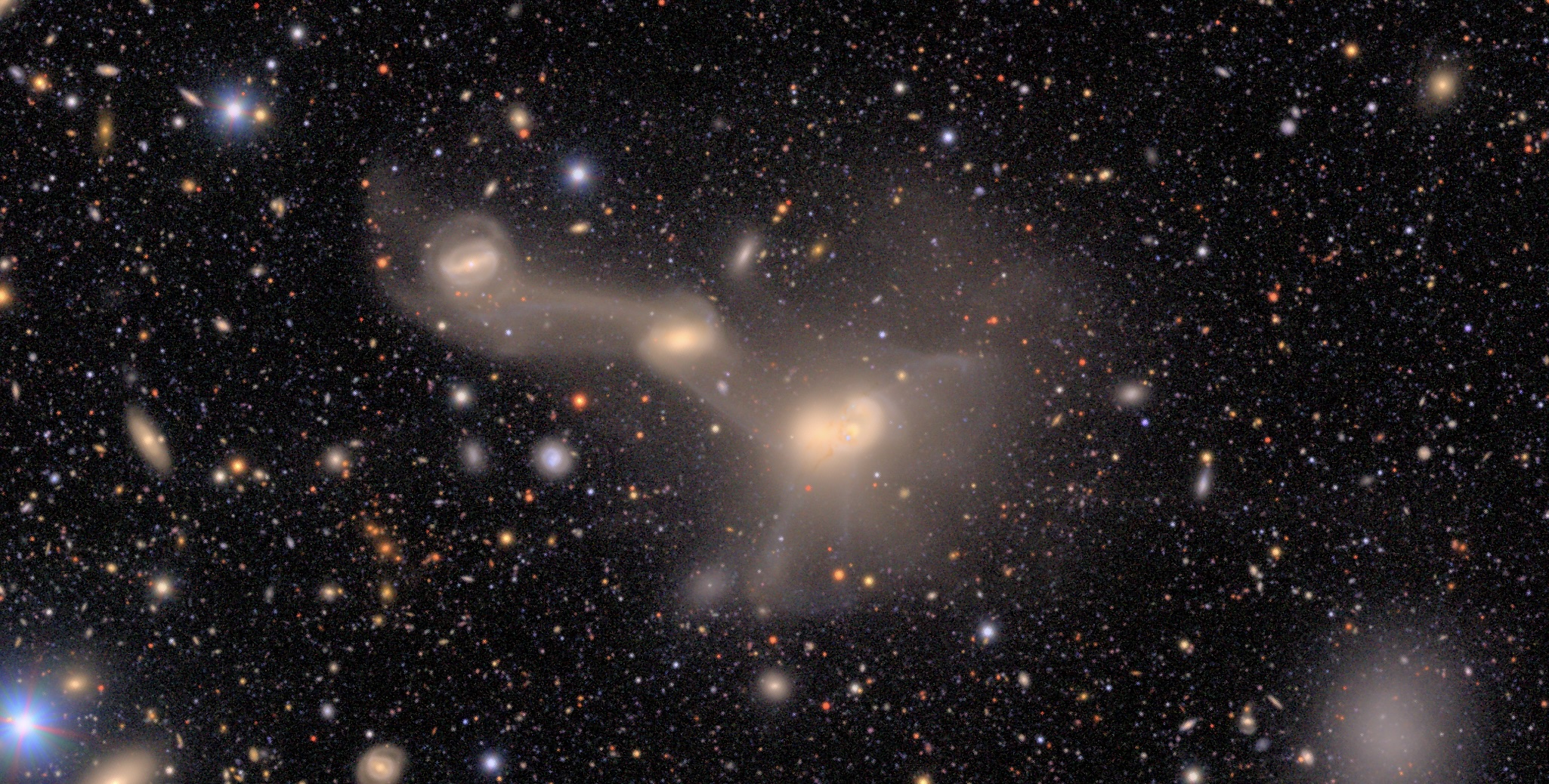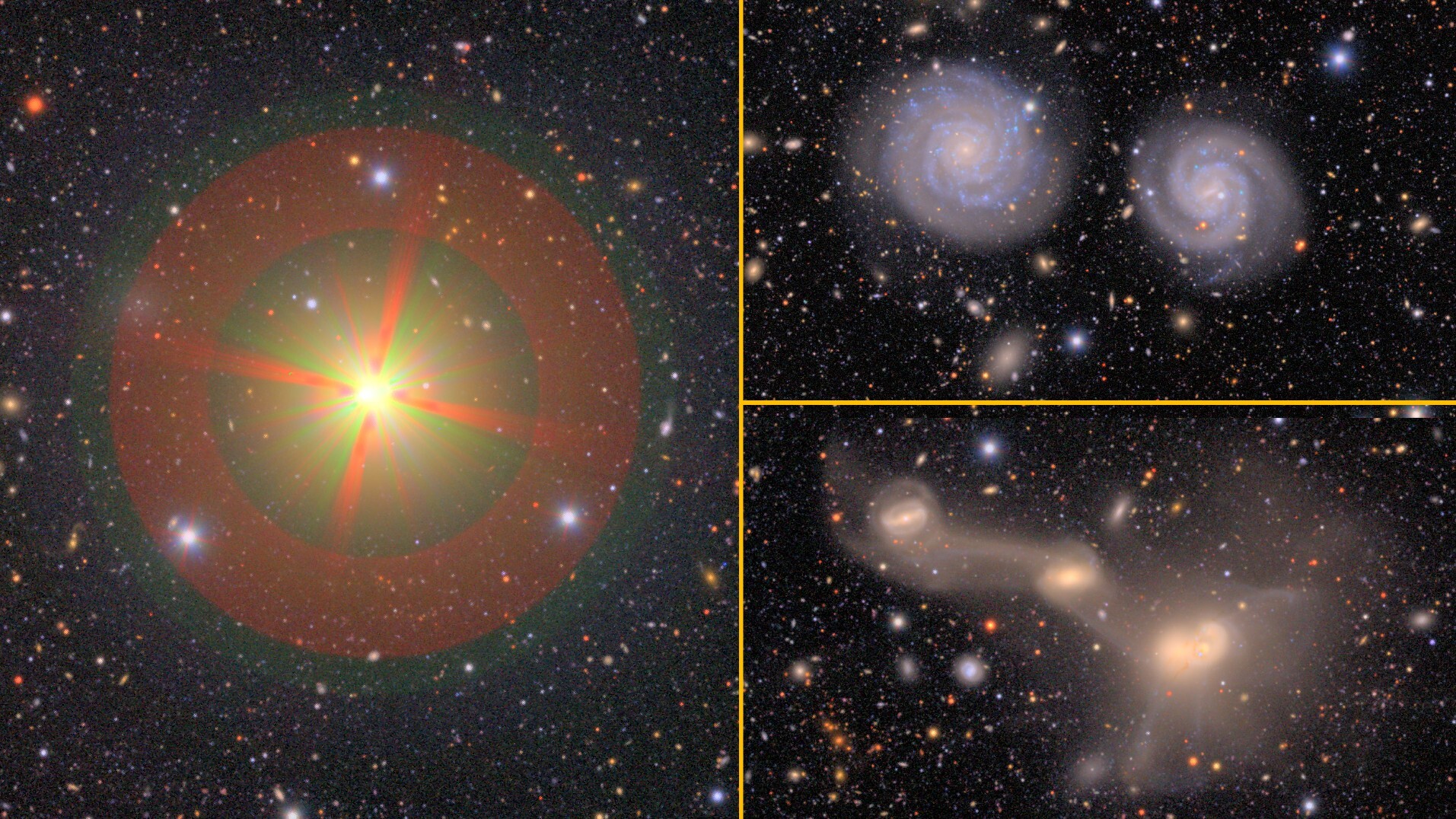The long-awaited Vera C. Rubin Observatory released its first batch of images Monday (June 23), captivating the world with one of the most detailed snapshots of space ever taken.
Using the world’s largest digital camera, the Rubin Observatory will spend the next 10 years taking a time-lapse movie of the entire night sky. And for the telescope’s glorious debut, the team revealed a stunning image that captures more than 10 million galaxies in and around the Virgo Cluster — a glittering galaxy cluster located about 55 million light-years from Earth, in the constellation Virgo.
The complete 3,200-megapixel image is so vast and detailed, it’s beyond the comprehension of human eyes, project scientists said at a news conference Monday. Luckily, the Rubin Observatory team has made a zoomable, searchable version of the image available on their website — and it’s teeming with jaw-dropping close-ups of cosmic objects, each one a work of art in its own right.
To dip your toes into the overwhelming image, try taking the observatory’s free online tour of “Rubin’s cosmic treasure chest.” We did — and highlighted some of the most stunning sights below, with their coordinates included for easy viewing. See if you can spot these cosmic jewels sprinkled throughout Rubin’s groundbreaking debut image.
A “grand design” spiral galaxy
Coordinates: 185.5, 4.5
Like an enormous celestial mirror, the “grand design” spiral galaxy Messier 61 (M61) gives astronomers a hint of what our own Milky Way looks like from the outside. Arranged face-on — meaning we can see the broad “face” of the galaxy, rather than just its flat edges — M61 flexes strong, well-defined spiral arms and boasts a bright galactic core housing a supermassive black hole. Though it’s located an estimated 55 million light-years from Earth, astronomers have studied the shimmering galaxy for hundreds of years; it was first detected in 1779, according to NASA, and is visible today through a good backyard telescope. You can spot it in the bottom center of Rubin’s image of the Virgo Cluster, just below a smaller, bluer spiral galaxy.
A triple-galaxy collision

Coordinates: 186.67, 9.0
Three spiral galaxies have gotten a little too close for comfort in the upper-right corner of Rubin’s new image. While some individual spiral arms are still visible, the trio of galaxies are becoming visibly stretched in a gravitational tug-of-war that’s slowly pulling them together into one great, gassy gumbo. Bridges of matter stretch between the contorted galaxies as they slowly merge. Such pileups are common; scientists theorize that our own Milky Way has merged at least a dozen times over the past 12 billion years.
A bright, nearby star
Coordinates: 187.83, 7.58
Most objects in the Virgo Cluster are located far beyond the borders of our galaxy, but the Rubin Observatory also captured a smattering of nearby stars in its crosshairs. Identifiable by their propeller-like diffraction spikes and reddish glow, these stars are located within our own Milky Way, millions of times closer than the Virgo Cluster. The sharp diffraction spikes and halo-like glow are effects of light scattering inside the telescope’s optics and can help separate nearby stars from faraway galaxies.
A gargantuan galaxy cluster
Coordinates: 186.92, 8.83
Galaxy clusters are the largest objects in the universe bound together by gravity; the Virgo Cluster (the subject of Rubin’s debut image) contains an estimated 2,000 galaxies orbiting in relatively close proximity to each other, according to NASA.
But by squinting far, far beyond the foreground objects in the new image, Rubin shows us what a galaxy cluster looks like from the outside. Each fuzzy, orange splotch of light in this part of the image is a galaxy containing billions of stars, located billions of light-years from Earth. Faint lanes of gas and dust bridge the gaps between the distant galaxies. While it’s impossible to tell with the naked eye, our home galaxy is part of a similar cluster called the Virgo Supercluster, which contains both the Local Group (the group of galaxies that includes the Milky Way) and the Virgo Cluster.
A pair of galaxies with healthy boundaries
Coordinates: 186.67, 8.83
Two spiral galaxies, alike in dignity, appear to have a healthy respect for each other’s personal boundaries; unlike the galactic train wrecks seen elsewhere in the Virgo Cluster, there is no apparent merger happening here. The reason involves a slight optical illusion. While the galaxies appear side by side, one is located much deeper in space than the other. According to the Rubin Observatory team, the galaxy on the right (NGC 4411) is about 50 million light-years away from Earth, while its partner on the left (NGC 4411b) is more than 70 million light-years distant. With plenty of space between them — and both oriented face-on toward Earth — we get to enjoy the sight of both in undisturbed glory.
A cosmic pancake
Coordinates: 185.93, 6.93
Scattered throughout the image, long beams of bright light glow inside spherical halos. If you zoom in far enough, you’ll see that many are spiral galaxies — but they’re tilted edge on, with their faces pointed away from Earth. Unlike with face-on galaxies, we see these objects as flattened, pancake-like disks cloaked in glowing dust. Even if you look closely at this galaxy (NGC 4343), you still won’t be able to make out its spiral arms. But you can see an active galactic nucleus at its center — a feeding supermassive black hole glowing bright as it pulls matter toward it at near light speed.
What else have you spotted in Rubin’s incredible 3,200-megapixel image of the Virgo Cluster? Leave a comment below with coordinates to share your discoveries.
